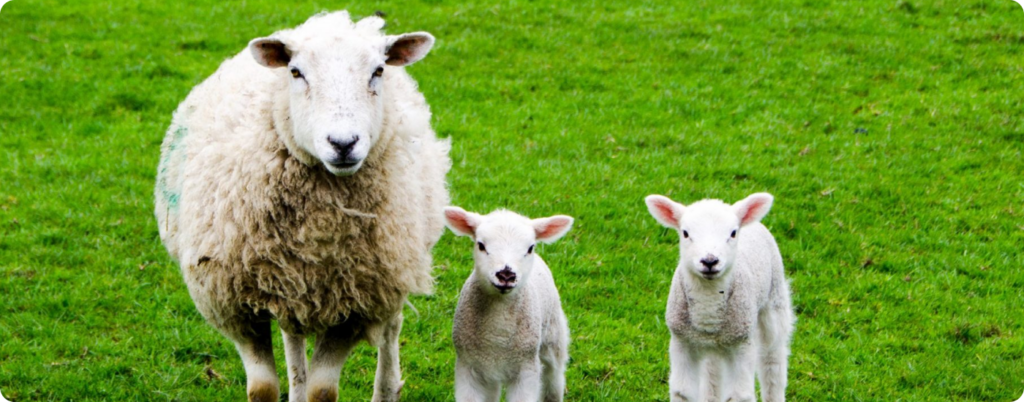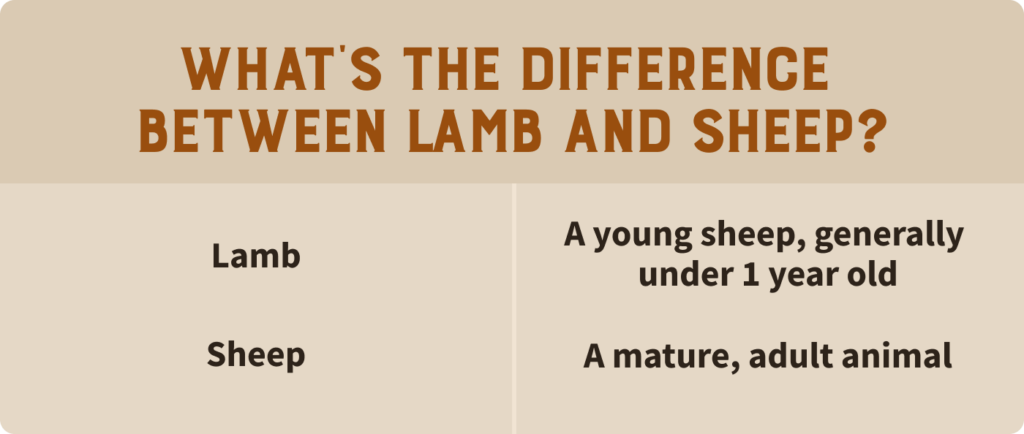PLEASE NOTE: The information in this blog is for educational purposes only. It is not a substitute for professional medical advice. Consult your healthcare provider if you’re seeking medical advice, diagnosis, or treatment.
The next time you go to the grocery store or farmers market, consider picking out lamb instead of the usual chicken breast or pork chops. Despite having much less fanfare, lamb is a hidden gem to add to your diet.
As you’ll see, this overlooked meat is a great source of vitamins, minerals, high-quality protein, and other beneficial components.
In this article, we’ll explore the question of is lamb good for you and find out why it can be so powerful as part of just about any diet.
Nutrition Facts: Is Lamb Good For You?

Lamb is one of the most popular forms of ruminant meat consumed around the world. Ruminants are animals (like cattle and deer) with specialized stomachs that allow them to extract nutrients from plant foods.

Like many other animal foods, lamb is a valuable source of protein, omega-3 fatty acids, B vitamins, and minerals. In lamb and sheep, you’ll find the following nutrients (1, 2):
- Vitamin A
- Vitamin B12
- Vitamin E
- Phosphorous
- Selenium
- Magnesium
- Copper
Regardless of the cut of meat, lamb is high in protein and fat but has no carbohydrates, making it a potential addition to low-carb diets.
Often overlooked, the organ meats from lamb or sheep can lead to increased intake of vitamin A, vitamin C, and B vitamins (3).
6 Health Benefits of Lamb Meat
Is lamb good for you? Given that lamb can be fattier than other types of meat, many consumers view it as an unhealthy option (4).
But lamb meat provides an amazing combination of taste, flexibility, and nutritional value. Unsurprisingly, it can be a helpful addition to a variety of diets.
1. Lamb is filled with valuable nutrients.
As we’ve seen, lamb nutrition provides protein, fatty acids, vitamins, minerals, and other components that benefit the body (5). Lamb and other meat products can be used as a strategy to prevent nutrient deficiencies (6).
A 2016 study from Colorado State University explored the nutrient content of different cuts of lamb (7).

They found that different cuts of lamb are an “excellent” source of protein, vitamin B2, vitamin B3, vitamin B12, zinc, and selenium.
2. Lamb is a protein-packed food.
About 3.5 ounces of lamb (100g) contains around 18 grams of easily absorbable protein that can contribute to the growth and repair of your body (8).
3. Lamb is carnivore, keto, paleo, and animal-based friendly.
Due to its lack of carbohydrates, lamb can be a perfect addition to low-carb diets such as the ketogenic or carnivore diet. Ruminant animals like lamb are also a cornerstone of the animal-based diet due to their nutrient density.
4. Lamb is easily digestible.
Not only is lamb an amazing source of vitamins and minerals, but it’s easily digestible (9). Some estimates claim that as much as 90% of the nutrients are absorbed by the body (10)!
5. Lamb is an unlikely source of omega 3’s.

When you think of omega 3’s, fish oil supplements and seafood likely come to mind. While this is valid, consuming lamb is a lesser-known way to get omega-3 fatty acids (11). These fatty acids are thought to play a key role in disease prevention and health (12).
Two of the main types of omega-3 fatty acids, EPA and DHA, are known to improve the immune system, relieve inflammation, and may reduce cardiovascular disease, allergies, and behavioral disorders (13, 14, 15).
If you don’t have access to high-quality seafood, lamb can be a great alternative for omega-3 fatty acids.
6. Lamb is a source of conjugated linoleic acid (CLA).
CLA (conjugated linoleic acid) is a polyunsaturated fatty acid present in dairy products and red meat with many health benefits (16). Lamb meat is one of the highest natural sources of CLA (17).
CLA can act as an antioxidant and is thought to possess anti-carcinogenic, anti-obesity, and anti-hypertensive effects (18, 19). It’s also being explored as potentially beneficial for weight loss, cardiovascular health, cancer, and inflammatory bowel disease (20, 21, 22).
Lamb vs Beef: Which is Healthier?
Both beef and lamb are popular forms of red meat responsible for providing key nutrients to all age groups (23). Like cattle, lamb and sheep can turn plants into bioavailable nutrients for humans. Although beef and lamb offer various benefits, there are some nutritional differences and beef consumption is much more common in the US.
Lamb offers about twice the amount of conjugated linoleic acid (CLA) compared to beef and is also considered a better source of minerals like calcium and iron (24, 25). Although the omega 3 content depends on a variety of factors, lamb contains about 2x more than beef (26).
Compared to beef liver, lamb liver can contain more iron but less copper and zinc (27). Sheep meat (called mutton) also tends to be lower in calories and cholesterol compared to pork or beef (28).
In general, red meat from lamb or iron can contain 10 times as much iron compared to chicken (29). Incorporating both beef and lamb into your diet can offer a variety of beneficial nutrients.
How to Incorporate Lamb in Your Diet
Cooked lamb is a staple globally due to its nutritional value and flexibility. The most common cuts of lamb are leg, rack, shoulder, shank, loin, and ground. Lamb organs are also commonly used for added nutrients. These can be used in tasty recipes such as:
- Lamb Burgers
- Ground Lamb Frittata
- Lamb Meatballs
- Shepherds Pie
- Lamb Kebabs
- Parmesan Crusted Lamb Chops
- Lamb Stew

You can find high-quality lamb in grocery stores, at local farmers markets, or from online retailers like US Wellness Meats and White Oak Pastures.
It’s helpful to look for locally raised, grass fed lamb that graze on a variety of plants. This can result in a more favorable fat composition, increased nutrient levels, and a healthier animal (30, 31).
Don’t Forget About Lamb
A standard American diet can leave out a host of incredibly nutritious foods. One of these overlooked options is lamb.
Even though it’s tasty and offers crucial vitamins and minerals, lamb is far less popular than beef, pork, or chicken. So, when constructing an animal-based diet, carnivore diet, or ketogenic diet, don’t forget about the value that eating lamb provides.
Subscribe to future articles like this: